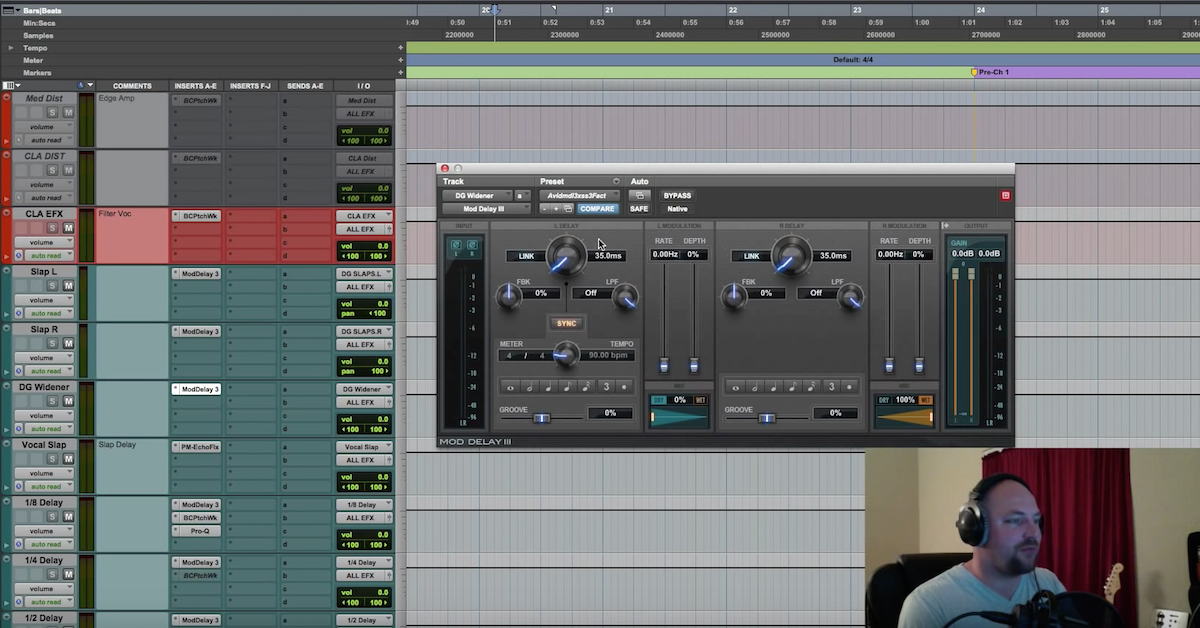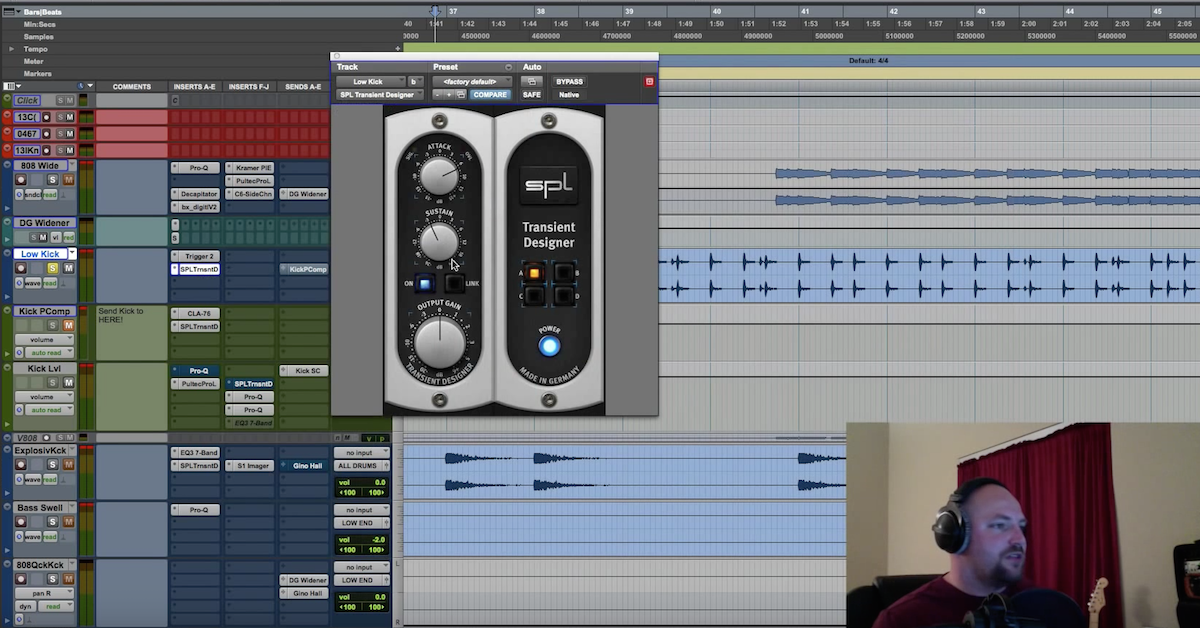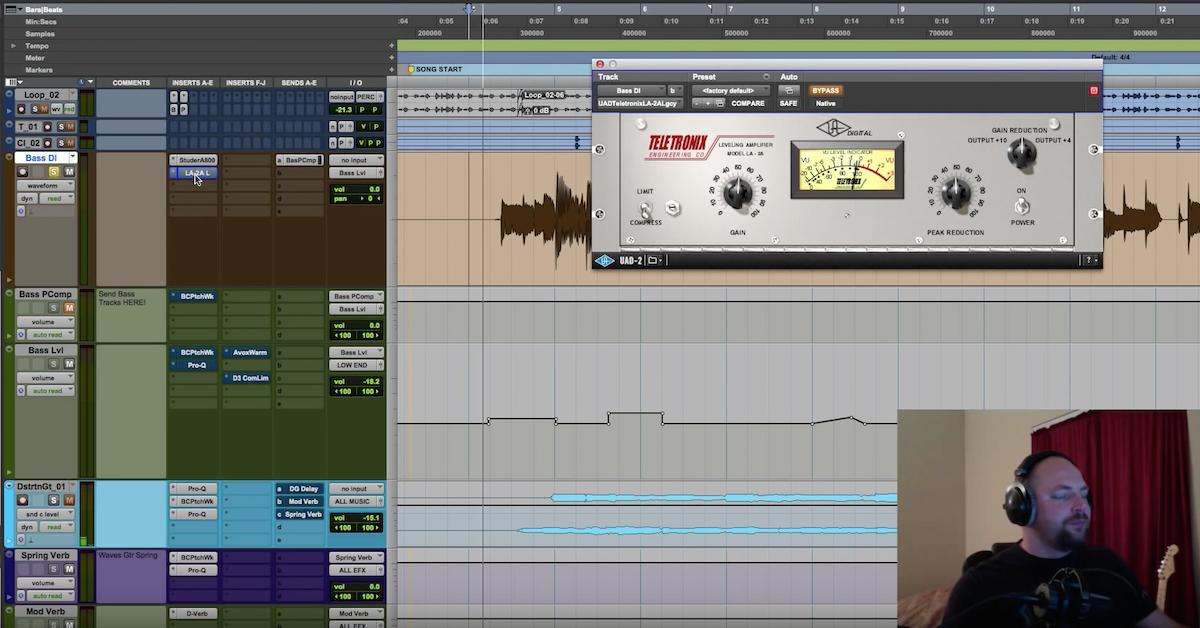Mastering a 2-Track with Parallel Processing
Today, I’m going to go over something I covered recently in a free course that I’ve offered over at my website: http://davidglennrecording.com/free-training-course.
That’s free to subscribers of davidglennrecording.com, but I felt like there was a parallel technique that could apply to mastering. In the video, I talk specifically about 2-tracks and working with the 2-track, some different techniques for that, mixing vocals up against it, how to make more room.
I’m going to look at it today from a mastering perspective and show a very similar technique.
The 2-track I’ve got, we’re going to assume it’s a mastered audio file, and you’ll see I’ve made a duplicate of it. You’ve got 2track.dup. I’ve got the vocals inactive so we can focus on the music, but the technique is pretty simple. I learned this years ago, I think I found it in a blog or a tutorial, and this is just my added touch to it. A bit more processing than what originally was taught to me.
I duplicated it, and you can hear what we’re working with. Let’s solo the original.
[two-track being mastered]
This is simply the same thing.
[two-track being mastered]
Now what I’m going to do is in parallel, I’m going to add some processing, parallel processing, to the duplicate to try to enhance the first track, and so I felt like after listening to this, I bounced this instrumental of a mix that I actually turned in, and I felt like as an instrumental, it could benefit from some width. Some additional width, some saturation, and a little bit of some oomph, some extra meat to the track.
I’m going to show you how I accomplished that.
First thing that I did was add Ozone 6 imager, and I just pushed out the low-mids, the mids, and the highs, what… 20, 25% each of them. I want to hear a before and after of that, and we’re going to bring the volume up here. We’ll pull this guy up so we can hear it just by itself.
This isn’t in parallel, this is just soloing it so we can hear what it’s going to accomplish for the track.
Before.
[2-track plays, before and after Ozone imager]
It just pushes it out a little bit.
So we’re getting some width from there, and then something I learned from Matthew Weiss, he was working on Snoop’s vocal, and he applied a kiss of lo-fi distortion. I’m talking .1, and I dug it, so I stole that from Matthew. Shout out to him.
He’s been killing actually, his latest tutorial videos are sick, so go check those out.
The difference is this. Let’s A/B it.
[2-track, before and after lo-fi adjustments]
Brings it forward, gives it a bit of grit, added character.
We’re going to get into the meat of what this tutorial is all about, and it’s the parallel compression side of things.
Now, I’ve got all kinds of plug-ins, and I love my third party stuff. In this case, I’m just going to pull open the good old Bomb Factory BF76. This is a free one that’s included with Pro Tools, and I’m going to smash this track to death. Let’s hear it.
[music with BF76 compressor engaged]
So I’m driving that for as much as 7, 10, 20 dB of reduction. I’ve actually got all buttons in selected, and I like the way that was really just oomphing it up for me, and just pumped it up. Totally changed the feel of it. Then I set the release to the tempo of the track.
Let me show you all the way fast, and I’ll just dial that back, and you’ll really start to hear it kind of move and feel with the rhythm of the track.
[music, adjusting BF76 compressor release]
That’s a little quick.
You can start to feel that pumping is in time a little bit more with the kick. You can really fine tune that and get in deeper with it, but get that to taste, and then I’m going to throw it all the way down, bring it out of solo.
I’ve got this track at the top has got nothing on it, and I’m going to blend this one in parallel, so let’s see what we get.
[both tracks play, blending levels together]
A tiny bit goes a long way. If you’re trying to push it and get things hot and loud, this could be a great way to fill it out.
Davidglennrecording.com, theproaudiofiles.com. And of course, themixacademy.com, $27 a month, you’re going to get session files that are professionally recorded. They’re great to work with, already edited, I failed to mention that in the other videos. They are edited, auto-tuned, auto-aligned, Melodyne’d, everything is set. It’s going to be a great way to step up your mixing game, build a portfolio, all that good stuff.






